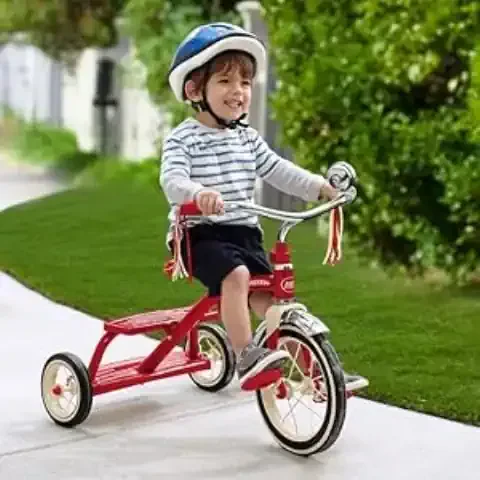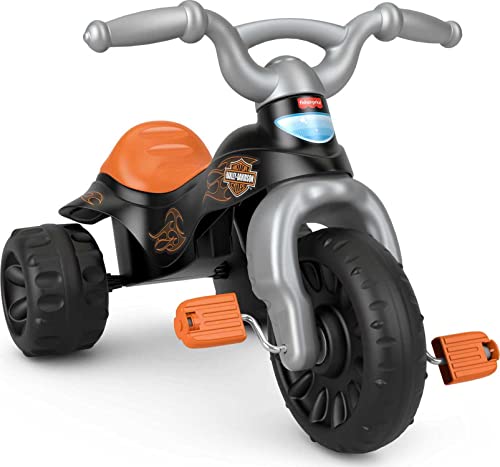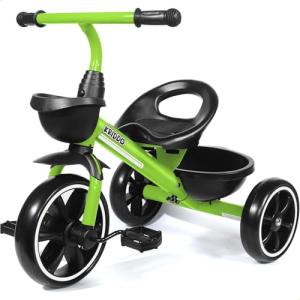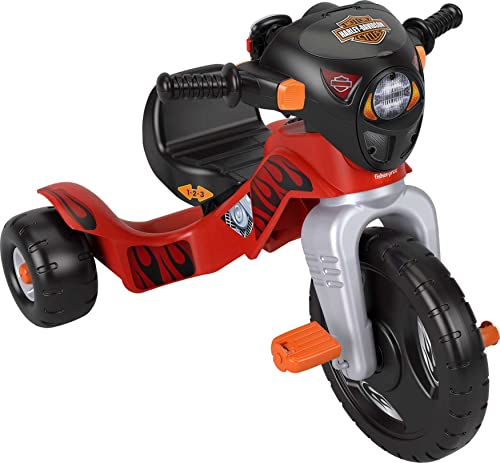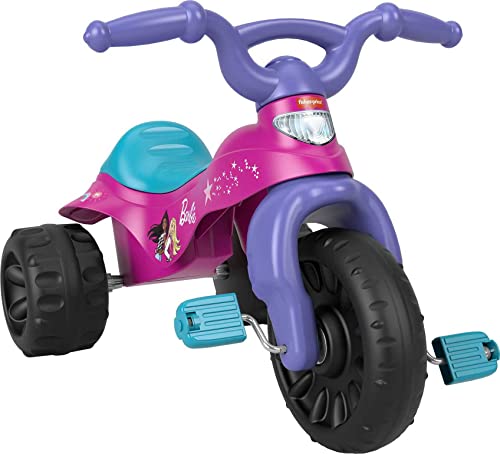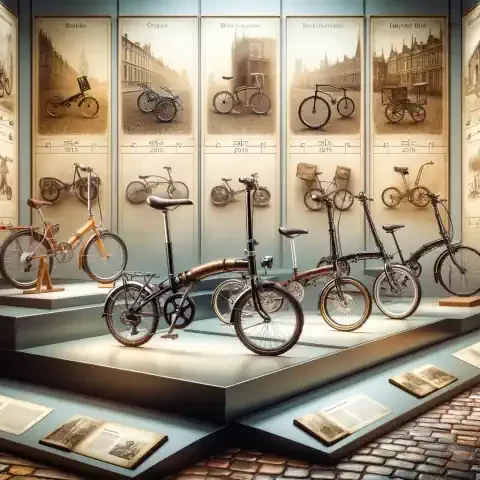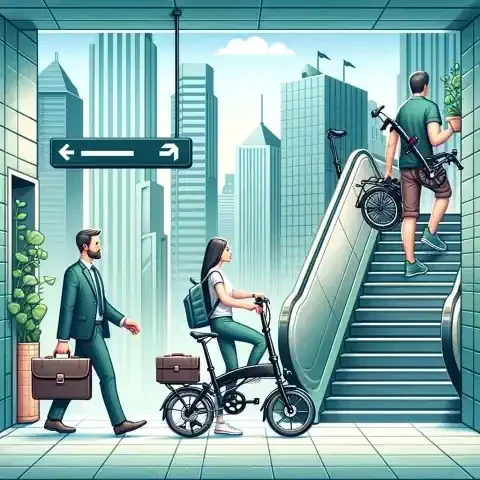Introduction
Tricycles, those charming three-wheeled wonders, hold a special place in the hearts of children and parents alike. As quintessential symbols of childhood play, tricycles are not merely toys; they are vehicles of exploration, growth, and boundless fun. In this article, we delve into the world of tricycles for kids, exploring their significance, evolution, benefits, and how they contribute to the holistic development of children.
Definition and Purpose of Tricycles for Kids
Tricycles, also known as trikes, are pedal-powered vehicles designed specifically for young children. Unlike bicycles, tricycles boast an additional wheel, providing stability and confidence for novice riders. While their primary purpose is recreational and playful, tricycles serve a crucial developmental role in children's lives.
From the earliest models made of wood and metal to the modern, sleek designs featuring vibrant colors and advanced features, tricycles have captivated generations of youngsters. They offer an accessible entry point into the world of cycling, allowing children to experience the thrill of movement and independence at an early age.
Importance of Tricycles in Child Development
The significance of tricycles extends far beyond mere entertainment. These humble vehicles play a vital role in the physical, cognitive, and social development of children.
Physical Development: Riding a tricycle engages various muscle groups, promoting strength, coordination, and balance. As children pedal, steer, and navigate obstacles, they develop gross motor skills essential for other physical activities and sports.
Cognitive Development: Tricycles enhance cognitive abilities such as spatial awareness, problem-solving, and decision-making. As children learn to maneuver their trikes through different terrains and situations, they hone their cognitive abilities, fostering a sense of confidence and independence.
Social Development: Tricycles facilitate social interaction and cooperation among children. Whether racing with friends or taking turns on a communal tricycle, kids learn valuable lessons in sharing, communication, and teamwork, laying the groundwork for positive social interactions later in life.
In essence, tricycles serve as more than just playthings; they are invaluable tools for nurturing the physical, cognitive, and social development of children, making them an essential component of any childhood experience.
History of Tricycles
Origins and Early Designs
Tricycles trace their roots back to the early 19th century when inventors began experimenting with three-wheeled vehicles as alternatives to traditional bicycles. One of the earliest recorded tricycle designs dates back to 1680, crafted by a German inventor named Stephan Farffler, who created a hand-cranked tricycle for mobility-impaired individuals.
However, it was during the 19th century that tricycles gained popularity as viable modes of transportation and recreation, particularly for children. Inventors across Europe and North America tinkered with various designs, incorporating features like wooden frames, metal wheels, and rudimentary steering mechanisms.
Evolution of the Tricycle for Kids
As the industrial revolution unfolded, tricycle designs underwent significant evolution, reflecting advancements in materials, manufacturing techniques, and societal preferences. By the late 19th and early 20th centuries, tricycles had become ubiquitous fixtures of childhood, cherished for their simplicity, durability, and accessibility.
During the mid-20th century, tricycle designs experienced a renaissance with the advent of new materials such as steel tubing, rubber tires, and plastic components. This era witnessed the emergence of iconic tricycle models characterized by sleek, streamlined designs and vibrant colors, capturing the imagination of children worldwide.
In recent decades, tricycles have continued to evolve, adapting to changing consumer preferences, safety regulations, and technological advancements. Modern tricycles boast an array of features, including adjustable seats, ergonomic handlebars, and safety enhancements, ensuring a safe and enjoyable riding experience for today's young cyclists.
Despite these advancements, the fundamental appeal of tricycles remains unchanged. From their humble beginnings as handcrafted contraptions to their status as beloved childhood companions, tricycles have left an indelible mark on the fabric of childhood, embodying the spirit of joy, exploration, and adventure.
Benefits of the Tricycle for Kids
Tricycles are more than just toys; they are powerful tools for fostering physical, cognitive, and social development in children. Here, we explore the myriad benefits that tricycles offer to young riders:
Physical Development
Enhanced Motor Skills: Riding a tricycle requires coordination between pedaling, steering, and balancing, which helps children develop fine and gross motor skills.
Strength Building: The act of pedaling strengthens leg muscles, while steering and maneuvering the tricycle build upper body strength.
Improved Balance and Coordination: As children learn to navigate turns and obstacles, they improve their balance and coordination, essential skills for various physical activities.
Cognitive Development
Spatial Awareness: Maneuvering a tricycle through space requires an understanding of distance, depth, and spatial relationships, enhancing spatial awareness.
Problem-Solving Skills: Children encounter challenges such as navigating obstacles or figuring out how to make turns, fostering problem-solving and critical thinking skills.
Decision-Making: Making choices such as when to stop, start, or turn helps children develop decision-making abilities and learn about cause and effect.
Social Development
Peer Interaction: Riding tricycles with friends or siblings encourages social interaction, cooperation, and communication.
Sharing and Turn-Taking: Negotiating turns on a communal tricycle or sharing riding space teaches children important lessons in sharing and turn-taking.
Building Confidence and Independence: Mastering the skills required to ride a tricycle boosts children's confidence and fosters a sense of independence and autonomy.
In summary, tricycles offer a host of benefits that contribute to children's overall development. By engaging their bodies and minds in active play, tricycles help children build essential physical, cognitive, and social skills, laying the foundation for a healthy and fulfilling future.
Types of Tricycles for Kids
Tricycles come in various shapes, sizes, and designs, each tailored to meet the diverse needs and preferences of young riders. Below are some of the most common types of tricycles for kids:
Classic Tricycles
Traditional Design: Classic tricycles feature a timeless design with a sturdy metal frame, large front wheel, and two smaller rear wheels.
Low Center of Gravity: The low center of gravity provides stability, making them ideal for young children who are learning to ride.
Simple and Durable: Classic tricycles are renowned for their simplicity and durability, making them a popular choice for parents seeking a reliable and long-lasting option.
Balance Bikes
No Pedals: Balance bikes, also known as run bikes or push bikes, lack pedals and rely on children's feet to propel them forward.
Promotes Balance and Coordination: By allowing children to focus on balancing and steering without the distraction of pedals, balance bikes help develop essential coordination and balance skills.
Transition to Pedal Bikes: Many children transition seamlessly from balance bikes to traditional bicycles, as they have already mastered the art of balancing.
Convertible Tricycles
Adaptability: Convertible tricycles offer versatility, allowing them to transform from a traditional tricycle with parent handles and safety features to a two-wheeled balance bike as children grow and develop.
Long-Term Use: With adjustable features and adaptable designs, convertible tricycles can accommodate children of various ages and skill levels, providing long-term value for parents.
Smooth Transition: The ability to switch between tricycle and balance bike modes facilitates a smooth transition to independent cycling, empowering children to explore their surroundings with confidence.
Electric Tricycles
Powered Assistance: Electric tricycles, also known as e-trikes, feature electric motors that provide powered assistance to young riders.
Enhanced Riding Experience: Electric tricycles offer a thrilling and effortless riding experience, allowing children to travel longer distances with ease.
Safety Features: Many electric tricycles come equipped with safety features such as speed control, braking systems, and parental controls, ensuring a safe and enjoyable ride for young cyclists.
Regardless of the type chosen, tricycles provide children with valuable opportunities for exploration, adventure, and growth. By selecting the right tricycle for their child's needs and preferences, parents can inspire a lifelong love of cycling and active play.
Factors to Consider When Choosing a Tricycle for Kids
Selecting the perfect tricycle for your child involves considering several important factors to ensure a safe, enjoyable, and age-appropriate riding experience. Here are key factors to keep in mind when choosing a tricycle for your little one:
Age and Size of the Child
Recommended Age Range: Tricycles are typically designed for specific age groups, so it's essential to choose one that is suitable for your child's age and developmental stage.
Adjustability: Look for tricycles with adjustable seat heights and handlebars to accommodate your child's growth spurts and ensure a comfortable fit as they grow.
Safety Features
Sturdy Construction: Opt for tricycles made from durable materials such as steel or aluminum for stability and longevity.
Safety Harness: Younger children may benefit from tricycles equipped with safety harnesses or straps to prevent falls and provide added security.
Safety Flags and Reflectors: Tricycles with safety flags and reflective materials enhance visibility, especially when riding outdoors or in low-light conditions.
Durability and Quality
Quality Components: Choose tricycles with high-quality components such as sturdy wheels, reliable brakes, and durable frames to ensure longevity and safety.
Brand Reputation: Research reputable brands known for producing high-quality tricycles that prioritize safety and performance.
Price Range
Budget Considerations: Determine your budget and explore tricycle options within that price range, balancing cost with quality and features.
Value for Money: Consider the long-term value of the tricycle, including its durability, adjustability, and potential for extended use as your child grows.
By carefully considering these factors and prioritizing safety, comfort, and age-appropriate features, you can select a tricycle that provides your child with countless hours of joyous riding adventures while promoting their physical, cognitive, and social development.
How to Teach Kids to Ride a Tricycle
Introducing your child to the world of tricycles is an exciting milestone that can pave the way for a lifetime of cycling adventures. Here's a step-by-step guide on how to teach your child to ride a tricycle:
Introduction to Riding
Choose the Right Tricycle: Select a tricycle that is appropriate for your child's age, size, and skill level. Ensure that the tricycle is assembled correctly and adjusted to fit your child comfortably.
Safety First: Teach your child about basic safety rules, including wearing a helmet, using hand signals, and staying alert while riding. Demonstrate how to properly mount and dismount the tricycle and how to use the brakes.
Safety Precautions
Select a Safe Riding Area: Choose a flat, open area free from traffic and obstacles, such as a driveway, sidewalk, or park pathway. Avoid areas with steep inclines or rough terrain.
Supervise Closely: Supervise your child closely during their initial riding attempts, providing guidance and support as needed. Stay within arm's reach to assist them if they lose balance or encounter difficulties.
Learning Process and Techniques
Practice Pedaling: Encourage your child to practice pedaling by pushing off with their feet and gradually building momentum. Start with short, gentle pushes and gradually increase the distance as they gain confidence.
Focus on Balance and Steering: Teach your child to maintain balance by keeping their body centered and their eyes focused ahead. Practice steering by turning the handlebars gently in the desired direction, emphasizing smooth, controlled movements.
Use Positive Reinforcement: Offer praise and encouragement to your child as they make progress, celebrating their achievements and milestones along the way. Be patient and supportive, recognizing that learning to ride a tricycle takes time and practice.
Gradually Increase Difficulty: Once your child has mastered the basics of riding in a controlled environment, gradually introduce challenges such as navigating turns, riding on different surfaces, and avoiding obstacles.
By following these steps and offering patience, encouragement, and support, you can help your child develop the skills and confidence needed to become a proficient tricycle rider. Remember to celebrate their successes and enjoy the journey together as they embark on this exciting new adventure.
Maintenance and Safety Tips for Tricycles
Ensuring the safety and longevity of your child's tricycle involves regular maintenance and adherence to essential safety practices. Here are some maintenance and safety tips to keep in mind:
Regular Inspections
Check for Wear and Tear: Routinely inspect the tricycle for any signs of wear and tear, including loose bolts, damaged components, or worn-out tires. Replace or repair any damaged parts promptly to maintain safety and performance.
Tighten Loose Parts: Tighten nuts, bolts, and screws regularly to prevent them from loosening during use. Pay special attention to critical components such as the handlebars, pedals, and wheels.
Proper Storage
Store Indoors: Store the tricycle indoors when not in use to protect it from the elements and minimize exposure to moisture, sunlight, and extreme temperatures. Consider using a dedicated storage area or covering the tricycle with a protective tarp or cover.
Avoid Rough Surfaces: Store the tricycle on a flat, level surface to prevent it from tipping over or becoming damaged. Avoid storing it near sharp objects or hazardous materials that could cause injury or damage.
Safety Gear and Rules
Wear a Helmet: Always ensure that your child wears a properly fitted helmet when riding the tricycle, regardless of their age or skill level. Choose a helmet designed for cycling and ensure that it meets safety standards.
Follow Traffic Rules: Teach your child basic traffic rules and safety practices, such as stopping at intersections, yielding to pedestrians, and using hand signals to indicate turns.
Supervise Riding: Supervise your child's tricycle riding activities, especially in areas with potential hazards such as traffic or uneven terrain. Set clear boundaries and rules for safe riding behavior.
Cleaning and Maintenance
Regular Cleaning: Clean the tricycle regularly to remove dirt, dust, and debris that can accumulate during use. Use mild soap and water to clean the frame, wheels, and other components, and dry thoroughly to prevent rust and corrosion.
Lubricate Moving Parts: Apply lubricant to moving parts such as the pedals, chain, and wheels to ensure smooth operation and prevent premature wear. Wipe off any excess lubricant to prevent attracting dirt and debris.
By following these maintenance and safety tips, you can ensure that your child's tricycle remains safe, reliable, and enjoyable for years to come. Regular inspections, proper storage, adherence to safety rules, and routine cleaning and maintenance are essential practices for maintaining the integrity and performance of the tricycle.
Frequently Asked Questions about Tricycles for Kids
As parents and caregivers consider introducing tricycles into their child's life, common questions often arise. Here are answers to some frequently asked questions about tricycles for kids:
What Age Can Kids Start Riding Tricycles?
Children as young as 18 months to 2 years old can begin to explore tricycles designed specifically for their age group. These tricycles typically feature low seats, stable designs, and parent handles for guidance.
Are Tricycles Safe for Kids?
When used properly and with appropriate safety gear such as helmets, tricycles can be safe for kids. It's crucial to select a tricycle that is age-appropriate, well-maintained, and ridden in a safe environment away from traffic and other hazards.
How to Choose the Right Size Tricycle?
Choose a tricycle that suits your child's height and weight, ensuring they can comfortably reach the pedals and handlebars while maintaining proper posture. Many tricycles offer adjustable features such as seat height and handlebar position to accommodate growth.
How to Teach a Child to Ride a Tricycle?
Start by introducing your child to the tricycle in a safe, open space and teach them basic safety rules and riding techniques. Provide hands-on guidance and encouragement as they practice pedaling, steering, and balancing, gradually increasing difficulty as they gain confidence.
By addressing these common questions, parents can make informed decisions about introducing tricycles into their child's playtime and outdoor activities. With proper supervision, guidance, and attention to safety, tricycles can offer countless hours of fun and developmental benefits for young riders.
Conclusion
Tricycles hold a cherished place in childhood memories, symbolizing freedom, adventure, and boundless joy. As we've explored throughout this article, tricycles are more than just toys; they are powerful tools for promoting physical, cognitive, and social development in children.
From their humble origins to the diverse array of designs available today, tricycles have evolved alongside children, adapting to meet their changing needs and preferences. Whether it's the classic simplicity of a traditional tricycle, the versatility of a convertible model, or the excitement of an electric version, tricycles offer something for every young rider.
Through the act of pedaling, steering, and navigating, children develop essential motor skills, balance, coordination, and spatial awareness. They learn valuable lessons in decision-making, problem-solving, and cooperation as they explore their surroundings and interact with peers.
As parents, caregivers, and educators, it's essential to recognize the profound impact that tricycles can have on children's development. By providing opportunities for active play, exploration, and adventure, tricycles lay the foundation for a lifelong love of cycling and physical activity.
So, whether you're introducing your child to their first tricycle or watching them graduate to a two-wheeled bike, remember the enduring significance of these beloved childhood companions. Embrace the laughter, the learning, and the unforgettable moments that tricycles bring, knowing that you're nurturing not just a love of riding, but a love of life itself.
